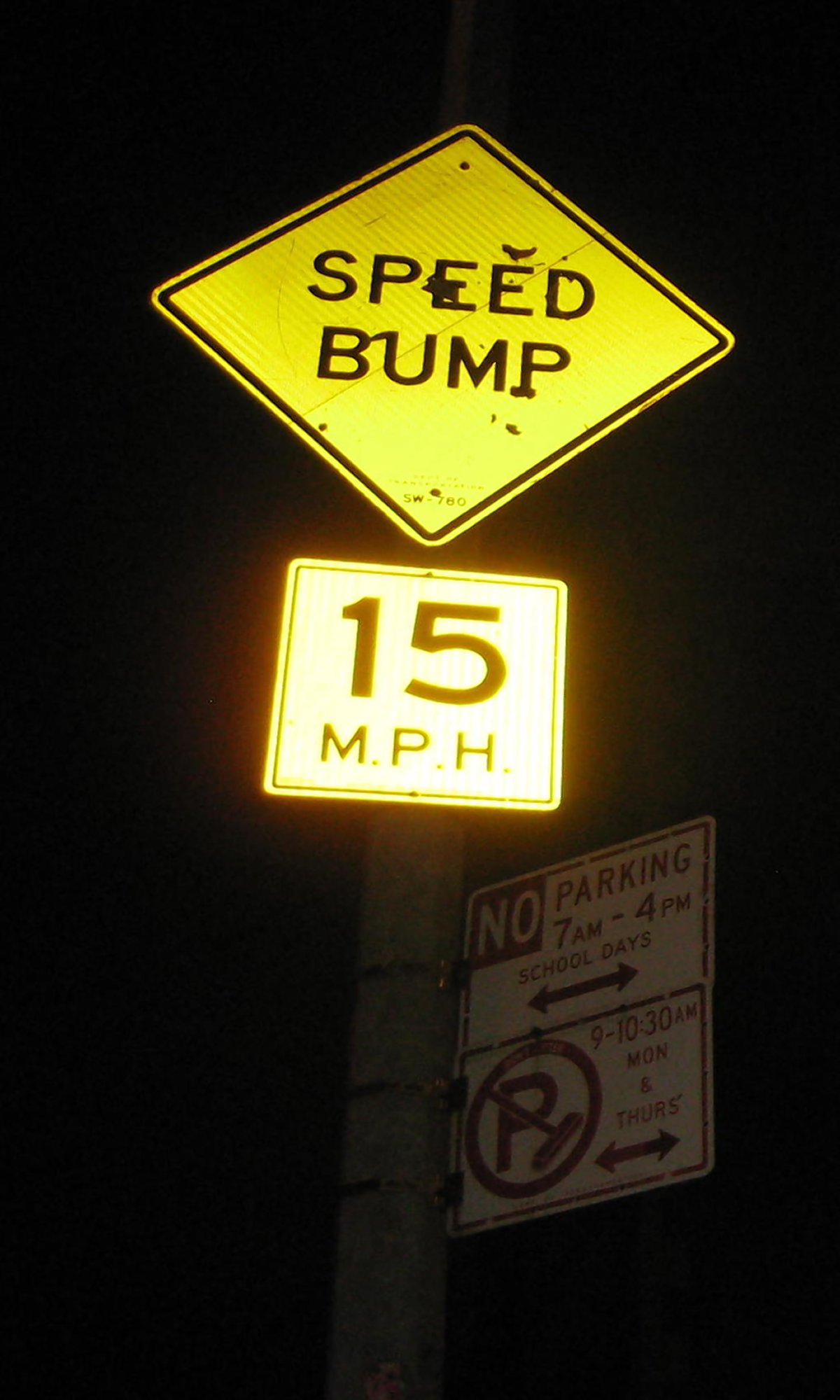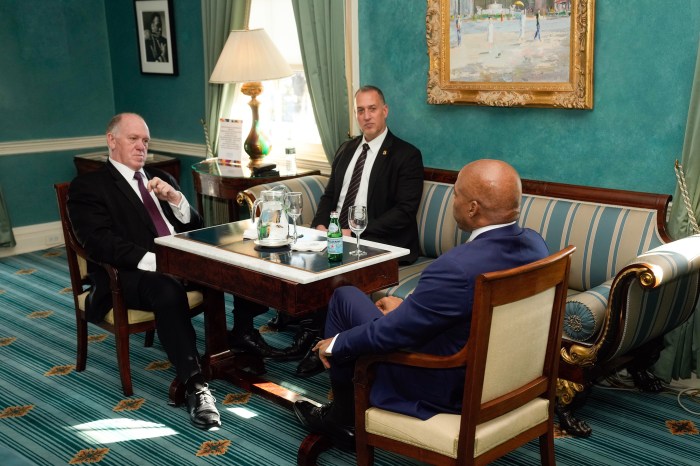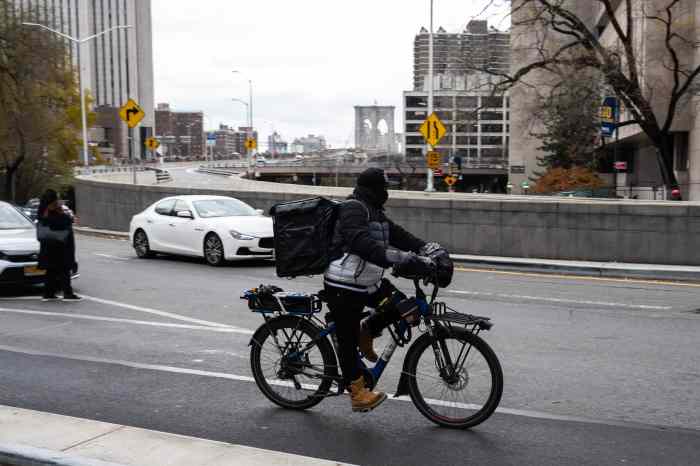
BY LESLEY SUSSMAN | Crashes involving injuries in the Tompkins Square / Alphabet City area have dropped 23 percent, and pedestrian injuries from speeding cars have gone down 36 percent since a “slow zone” was put into effect for the area two years ago. That was the report from a city Department of Transportation project manager at Tuesday nights’ Community Board 3 Transportation & Public Safety / Environment Committee.
D.O.T. representative Alicia Posner updated the board members and about 15 local residents who attended on how the slow zone has been working. The program requires motorists to ease off the pedal in the area bounded by First Ave. and the F.D.R. Drive’s western edge between E. Second and 14th Sts. The initiative has reduced speeds in this zone from 30 miles per hour to 20 miles per hour and still lower to 15 miles per hour on blocks with schools.
“We’ve had pretty positive data results,” Posner told the meeting. “The slower speeds are saving lives. We’re seeing a reduction of speeds, as well as injuries.”
An application for the slow zone plan was originally drafted and proposed to the city in 2013 by C.B. 3 board member Chad Marlow — who currently chairs the board’s Transportation Subcommittee — because of the high number of pedestrian injuries in the neighborhood from speeding cars. In 1995, Marlow’s father was struck by a speeding drunk driver, leaving him a quadriplegic with severe brain injury.
In drafting the application, Marlow and the group Transportation Alternatives culled data from D.O.T., the Police Department and the State Department of Motor Vehicles. This data showed that in the Alphabet City area from 2005 to 2009, there were 143 pedestrian injuries, 70 cyclist injuries and two fatalities.
The slow zone plan is designed to protect pedestrians in areas where there is a high concentration of schools, daycare centers and senior citizen centers. According to D.O.T., there are about six schools, plus multiple daycares, pre-Ks and senior centers, in the Tompkins Square Park / Alphabet City area. D.O.T. also identified this section of the East Village as a “high-crash area.”
There were 74 applications for slow zones submitted citywide. D.O.T. selected 26 of these, to be rolled out throughout the five boroughs over three years, with the Tompkins Square / Alphabet City area being among the highest-priority areas.
When the city O.K.’d the C.B. 3 application later that year, D.O.T. began to install speed humps and signage throughout the East Village, cautioning motorists on various side streets and avenues that a 20-mile-per-hour speed limit was now in effect. On some streets where schools are located, the speed limit was reduced an additional 5 miles per hour. The East Village speed limit previously had been, like for the rest of the city, 30 miles per hour. However, Mayor de Blasio reduced the city’s default speed limit to 25 miles per hour in November 2014.
Posner told the meeting that there had been a 14 percent total reduction of crashes in the East Village zone since the program started. She added that this figure was based on crashes in which injuries were involved, according to police reports.
The D.O.T. representative added that, in order to monitor the program, the agency each week sends out personnel with radar guns who take 100 daily readings of vehicle speeds in the zone.
“What we found is that at all the locations that we monitored, the speeds went down,” she said, “both along the avenues, as well as a number of side streets.”
Posner said she had no information immediately available on how many tickets police have issued to motorists for speeding, adding that the lower speed limit was mostly “self-enforced.”
She also noted that there are currently 20 speed humps located throughout the area, adding, “There’s an opportunity to increase them if the community wants more of them.” Until the slow zone was implemented, there were just four speed humps in the neighborhood, she added.
When Posner finished her presentation, Marlow, the founder of the Tompkins Square Park & Playground Parents’ Association, expressed his appreciation at how well the plan was working.
“This is obviously saving lives and preventing injuries,” he said. “It’s a very meaningful thing.”





































